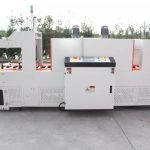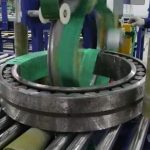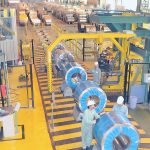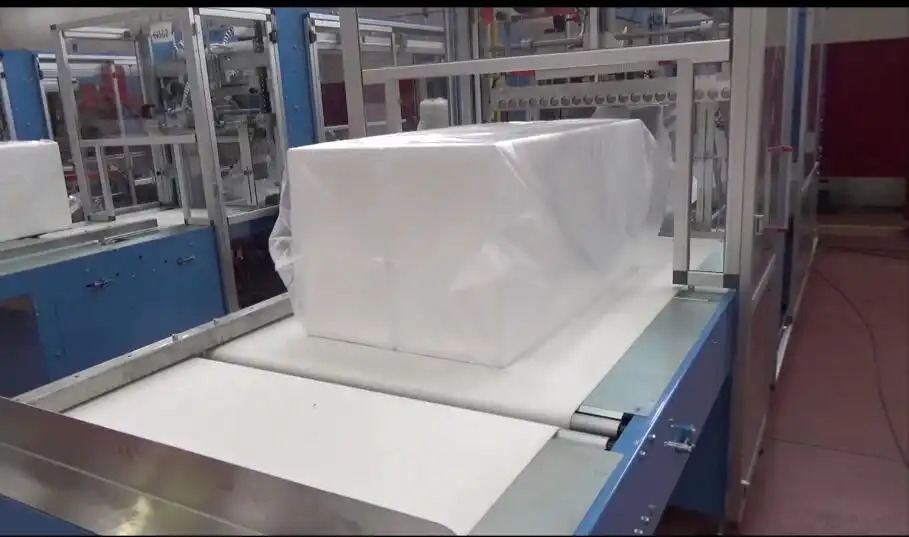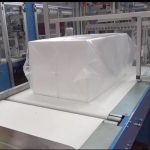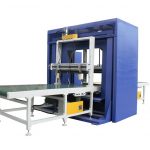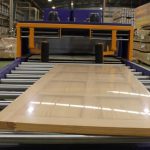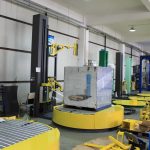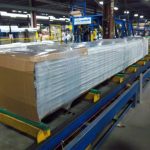Making a Smart Investment in Film Roll Packing Technology
In today’s fast-paced manufacturing world, efficiency and precision are key to staying competitive. When it comes to packaging film rolls, investing in the right technology can make all the difference. Let’s dive deep into the world of film roll packing technology and explore how making a smart investment in this area can revolutionize your operations.
Understanding the Importance of Film Roll Packing
Before we delve into the specifics of the technology, it’s crucial to understand why proper film roll packing is so important. Film rolls are used in various industries, from food packaging to industrial applications. These rolls are sensitive to damage and contamination, making proper packaging essential for:
- Protecting the film from moisture and dust
- Preventing physical damage during transport and storage
- Maintaining the film’s quality and integrity
- Ensuring customer satisfaction with the product
Investing in advanced packing technology isn’t just about wrapping a roll; it’s about preserving your product’s value from production to end-use.
The Evolution of Film Roll Packing Technology
Film roll packing has come a long way from manual wrapping methods. Let’s take a quick journey through its evolution:
- Manual wrapping: Labor-intensive and inconsistent
- Semi-automatic machines: Improved consistency but still required significant human intervention
- Fully automatic systems: Minimal human involvement, high efficiency
- Smart, connected systems: The latest in packing technology, offering data-driven operations and remote monitoring
This progression shows how the industry has continuously sought to improve efficiency, consistency, and quality in film roll packing.
Key Features of Modern Film Roll Packing Machines
When considering an investment in film roll packing technology, it’s essential to understand the features that set modern machines apart:
1. Automated Loading and Unloading
Gone are the days of manually positioning each roll. Modern machines feature:
- Robotic arms for precise roll placement
- Conveyor systems for smooth roll movement
- Sensors to detect roll size and adjust accordingly
These features not only speed up the process but also reduce the risk of human error and workplace injuries.
2. Precision Wrapping Mechanisms
The heart of any packing machine is its wrapping system. Look for:
- Multi-axis wrapping for complete coverage
- Tension control to prevent film damage
- Variable speed options to accommodate different roll sizes and materials
Precision in wrapping ensures that each roll is protected uniformly, reducing waste and improving product quality.
3. Customizable Packaging Options
One size doesn’t fit all in film roll packing. Advanced machines offer:
- Programmable wrapping patterns
- Multiple film options (stretch, shrink, or both)
- Adjustable wrapping tension
This flexibility allows you to tailor the packaging to your specific product needs and customer requirements.
4. Integrated Quality Control Systems
Ensuring consistent quality is crucial. Look for machines with:
- In-line weight checking
- Barcode scanning and labeling
- Vision systems for package inspection
These features help maintain high standards and catch any issues before products leave your facility.
5. User-Friendly Interfaces
Ease of operation is key to maximizing your investment. Modern machines typically include:
- Touchscreen controls
- Intuitive software interfaces
- Multi-language support
These features reduce training time and minimize the risk of operator errors.
The Benefits of Investing in Advanced Film Roll Packing Technology
Now that we’ve covered the key features, let’s explore the tangible benefits of investing in this technology:
Increased Productivity
Advanced packing machines can significantly boost your output. With speeds of up to 30 rolls per hour or more, depending on the model, you can dramatically increase your packaging capacity. This increased speed doesn’t come at the cost of quality; in fact, consistency often improves with automation.
Reduced Labor Costs
While the initial investment in a packing machine may seem high, the long-term savings on labor costs can be substantial. A single machine can often replace the work of several employees, allowing you to reallocate your workforce to more value-added tasks.
Improved Product Quality
Consistency is key in packaging, and machines excel at repetitive tasks. With precise tension control and uniform wrapping patterns, you can expect:
- Fewer damaged rolls
- Better protection against moisture and contaminants
- More professional-looking packages
This improvement in quality can lead to increased customer satisfaction and fewer returns or complaints.
Enhanced Safety
Manual packing of heavy film rolls can pose significant safety risks to workers. Automated systems remove these risks by handling the heavy lifting and repetitive motions. This can lead to:
- Fewer workplace injuries
- Reduced worker fatigue
- Lower insurance costs
Investing in safety is not just good for your employees; it’s good for your bottom line.
Data-Driven Operations
Modern packing machines often come equipped with data collection and analysis capabilities. This allows you to:
- Track production rates in real-time
- Identify bottlenecks in your process
- Make data-driven decisions for process improvement
By leveraging this data, you can continuously optimize your operations for maximum efficiency.
Factors to Consider When Choosing a Film Roll Packing Machine
Investing in packing technology is a significant decision. Here are some key factors to consider:
1. Production Volume
Assess your current and future production needs. Choose a machine that can handle your expected volume with room for growth.
2. Film Roll Specifications
Consider the size and weight range of your film rolls. Ensure the machine can accommodate your entire product line.
3. Packaging Material Compatibility
Different machines work best with specific types of packaging materials. Make sure the machine is compatible with your preferred film types.
4. Space Constraints
Measure your available floor space and check the machine’s footprint. Don’t forget to account for loading and unloading areas.
5. Integration with Existing Systems
Consider how the new machine will fit into your current production line. Look for options that offer easy integration with your existing setup.
6. Service and Support
Investigate the manufacturer’s reputation for customer support and the availability of service technicians in your area.
7. Total Cost of Ownership
Look beyond the initial price tag. Consider factors like:
- Energy efficiency
- Maintenance requirements
- Expected lifespan
- Upgrade options
A more expensive machine might offer lower long-term costs and better value.
Preparing for Implementation
Once you’ve chosen your film roll packing machine, proper implementation is crucial for maximizing your investment. Here’s how to prepare:
1. Site Preparation
Ensure your facility is ready for the new equipment:
- Reinforce floors if necessary
- Install appropriate power supplies
- Create clear paths for material flow
2. Staff Training
Invest in comprehensive training for your operators and maintenance staff. This might include:
- On-site training from the manufacturer
- Sending key personnel to the manufacturer’s facility for in-depth training
- Creating detailed operating procedures and manuals
3. Pilot Testing
Before fully integrating the new machine into your production line, conduct thorough pilot tests:
- Start with a small production run
- Monitor quality closely
- Adjust settings as needed
This phase allows you to iron out any issues before scaling up to full production.
4. Maintenance Planning
Develop a robust maintenance plan to keep your new machine running smoothly:
- Schedule regular preventive maintenance
- Stock essential spare parts
- Establish a relationship with local service technicians
Proper maintenance will extend the life of your investment and minimize costly downtime.
Future Trends in Film Roll Packing Technology
As you consider your investment, it’s worth looking at where the technology is headed. Some emerging trends include:
1. Internet of Things (IoT) Integration
Future machines are likely to be even more connected, offering:
- Real-time performance monitoring
- Predictive maintenance alerts
- Remote diagnostics and troubleshooting
2. Sustainability Features
With increasing focus on environmental issues, look for machines that offer:
- Energy-efficient operations
- Compatibility with eco-friendly packaging materials
- Waste reduction features
3. Artificial Intelligence and Machine Learning
These technologies could revolutionize packing operations through:
- Automatic optimization of wrapping patterns
- Self-adjusting tension control
- Predictive quality control
Keeping these trends in mind can help you choose a machine that will remain cutting-edge for years to come.
Case Studies: Success Stories in Film Roll Packing Investment
Let’s look at a couple of real-world examples of companies that have benefited from investing in advanced film roll packing technology:
Company A: Boosting Efficiency in Food Packaging
A mid-sized food packaging company invested in a fully automated film roll packing system. The results were impressive:
- 40% increase in packaging output
- 50% reduction in packaging material waste
- 30% decrease in labor costs
- ROI achieved in just 18 months
The company attributed its success to the machine’s precision wrapping and integrated quality control features.
Company B: Improving Safety and Quality in Industrial Films
A large industrial film manufacturer upgraded its packing line with a smart, connected system. The benefits included:
- 60% reduction in workplace injuries related to packing
- 25% improvement in customer satisfaction scores
- Real-time production data leading to a 15% increase in overall efficiency
The company highlighted the machine’s safety features and data-driven insights as key factors in their success.
Conclusion: Embracing the Future of Film Roll Packing
Investing in film roll packing technology is more than just a purchase; it’s a strategic decision that can transform your operations. By choosing the right machine, you’re not just buying equipment – you’re investing in efficiency, quality, safety, and future-proofing your business.
As we’ve explored, modern film roll packing machines offer a wide range of benefits, from increased productivity and reduced labor costs to improved product quality and enhanced safety. The key is to carefully assess your needs, consider future trends, and choose a solution that aligns with your long-term business goals.
Remember, the world of manufacturing is constantly evolving. By making a smart investment in film roll packing technology today, you’re positioning your company to meet the challenges of tomorrow. Whether you’re a small operation looking to scale up or a large manufacturer aiming to stay competitive, the right packing technology can be a game-changer.
So, take the time to research, ask questions, and envision how advanced packing technology can fit into your operations. The future of your film roll packaging – and potentially your entire business – may depend on the choice you make today. Embrace the technology, and watch your efficiency and quality soar to new heights.
